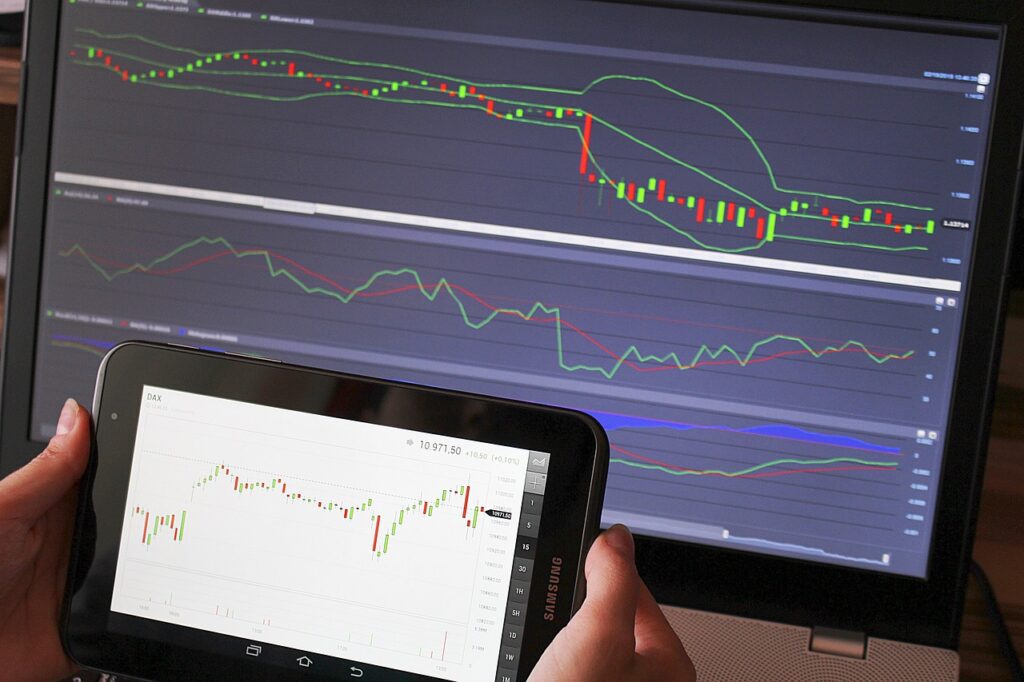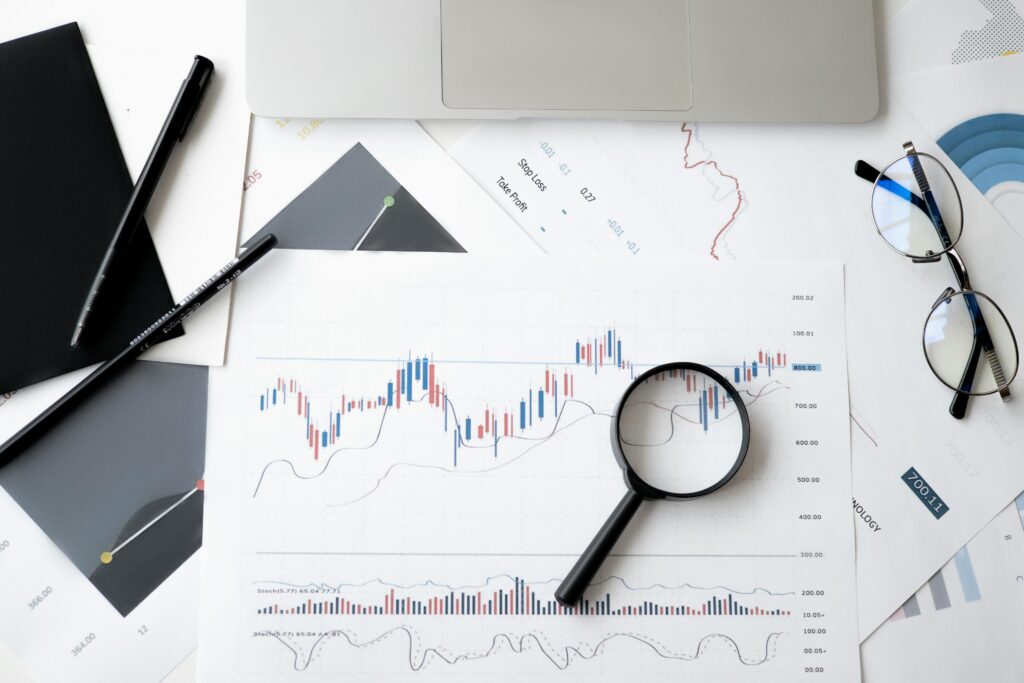
In trading, the tools and strategies you use can be the deciding factor between steady gains and major setbacks. Whether you’re a seasoned trader or just starting, it’s essential to continuously refine your strategies and adapt to market changes. In this article, we will explore the top 5 trading techniques that can help you boost your market performance and achieve better results.
1. Technical Analysis: The Foundation of Informed Trading
Technical analysis is one of the most fundamental and widely-used in trading techniques. It’s all about diving into past price data, examining chart patterns and price action trading techniques, and checking out trading volumes to guess where prices might head next. By studying how prices have behaved in the past, traders can make educated guesses about where they might go next.
Key Components of Technical Analysis:
- Chart Patterns: Patterns such as head and shoulders, double tops, and triangles can signal potential price reversals or continuations. Grasping these patterns gives traders the edge they need to predict how the market will move.
- Indicators: Technical indicators like moving averages, Relative Strength Index (RSI), and MACD (Moving Average Convergence Divergence) provide insights into market momentum and potential entry or exit points.
- Support and Resistance Levels: These are key price levels where a security tends to find support as it falls and resistance as it rises. Identifying these levels helps traders set stop-loss orders and target prices.
How to Apply Technical Analysis:
Start by selecting a reliable charting tool and familiarize yourself with its features. Begin analyzing historical price data for the asset you’re trading, looking for patterns and trends that could inform your trading decisions. Combine multiple indicators to confirm potential trades, rather than relying on a single signal. Remember that technical analysis is more effective when used in conjunction with other trading techniques, such as fundamental analysis.
2. Fundamental Analysis: Understanding the Bigger Picture
Technical analysis hones in on price trends, while fundamental analysis digs deeper, exploring the core factors that influence market behavior. This technique involves evaluating a company’s financial health, economic conditions, and industry trends to determine the intrinsic value of a security. By understanding what influences price movements, traders can make more informed decisions.
Key Components of Fundamental Analysis:
- Financial Statements: Analyzing a company’s income statement, balance sheet, and cash flow statement helps traders assess its profitability, financial stability, and growth potential.
- Economic Indicators: Data such as GDP growth, unemployment rates, and inflation are critical in understanding the broader economic environment and its impact on markets.
- Industry Trends: Keeping an eye on trends within a specific industry can provide insights into potential opportunities or risks for a particular security.
How to Apply Fundamental Analysis:
Start by identifying the key metrics that are relevant to the asset you’re analyzing. For stocks, focus on earnings reports, revenue growth, and P/E ratios. For currencies, monitor central bank policies and economic data releases. Use this information to determine whether an asset is overvalued or undervalued, which can inform your trading decisions. Combine this analysis with technical indicators to time your trades more effectively.
3. Risk Management: Protecting Your Capital
No trading technique is complete without a robust risk management strategy. Successful traders know that protecting their capital is just as important as making profits. Risk management involves setting limits on the amount of capital you’re willing to risk on each trade, as well as implementing strategies to minimize losses.
Key Risk Management Techniques:
- Position Sizing: Determine the size of your position based on your account size and risk tolerance. Keep your risk for each trade between 1% and 2% of your total money.
- Stop-Loss Orders: Set up stop-loss orders to automatically close a trade if it reaches a certain loss limit. This approach helps you steer clear of emotional decision-making and keeps your losses under control.
- Diversification: Spread your investments around different assets or markets to reduce the risk.
How to Apply Risk Management:
Begin by assessing your risk tolerance and setting clear rules for how much you’re willing to risk on each trade. Use stop-loss orders to automatically close your position when it reaches a certain loss level. This approach helps you steer clear of emotional trading and keeps potential losses under control.
4. Algorithmic Trading: Leveraging Automation
Algorithmic trading, or algo-trading, is when you use computer programs to buy and sell stocks automatically based on specific rules. These algorithms can analyze market data at lightning speed, allowing traders to capitalize on market opportunities that may be too fast for human traders to exploit. Algorithmic trading can be particularly useful for high-frequency trading, where success depends on the speed and accuracy of execution.
Key Advantages of Algorithmic Trading:
- Speed: Algorithms can execute trades within milliseconds, enabling traders to take advantage of fleeting market opportunities.
- Accuracy: By removing human emotions from the equation, algorithmic trading can help reduce errors and improve the consistency of trading strategies.
- Backtesting: Traders can test their algorithms on historical data to see how they would have performed, allowing for refinement before live trading.
How to Apply Algorithmic Trading:
To start with algo trading, you’ll need a solid understanding of both trading strategies and programming. Begin by learning a programming language such as Python, which is widely used in algorithmic trading. Develop simple algorithms based on technical indicators or other criteria, and backtest them using historical data. As you gain experience, you can create more complex algorithms and explore different markets. If you’re not comfortable with programming, consider using pre-built trading bots or platforms that offer algorithmic trading features.
5. Swing Trading: Capturing Short to Medium-Term Trends
Swing trading is a technique or trading techniques that involves holding positions for several days to weeks, aiming to profit from short to medium-term price movements. Unlike day trading, which requires constant monitoring of the markets, swing trading allows traders to take advantage of larger price swings with less time commitment.
Key Elements of Swing Trading (Trading Techniques):
- Trend Analysis: Identifying the direction of the overall market or a specific asset is crucial for swing trading. Traders look for trends that can last from a few days to several weeks.
- Entry and Exit Points: Swing traders use technical indicators such as moving averages, RSI, and Fibonacci retracements to determine the best entry and exit points for their trades.
- Patience: Unlike day trading, swing trading requires patience as trades can take days or even weeks to reach their full potential.
How to Apply Swing Trading:
Start by identifying assets that show clear trends or potential for price swings. Use technical analysis to find optimal entry points and set stop-loss orders to protect your capital. Be prepared to hold your positions for several days or weeks, and avoid the temptation to react to short-term market fluctuations. Review your trades regularly to refine your strategy and improve your performance over time.
Conclusion
To improve your market performance using above trading techniques, you need a mix of effective trading techniques, ongoing learning, and consistent discipline. By mastering technical and fundamental analysis, implementing robust risk management strategies, exploring algorithmic trading, and considering swing trading, you can enhance your trading performance and achieve your financial goals.
Remember that no single technique guarantees success. The key to successful trading lies in using a combination of strategies, adapting to market conditions, and staying disciplined. As you continue to refine your approach and build your skills, you’ll be better equipped to navigate the complexities of the financial markets and maximize your trading potential




Pingback: Top 7 Crypto Trading Tips for Beginners in 2024